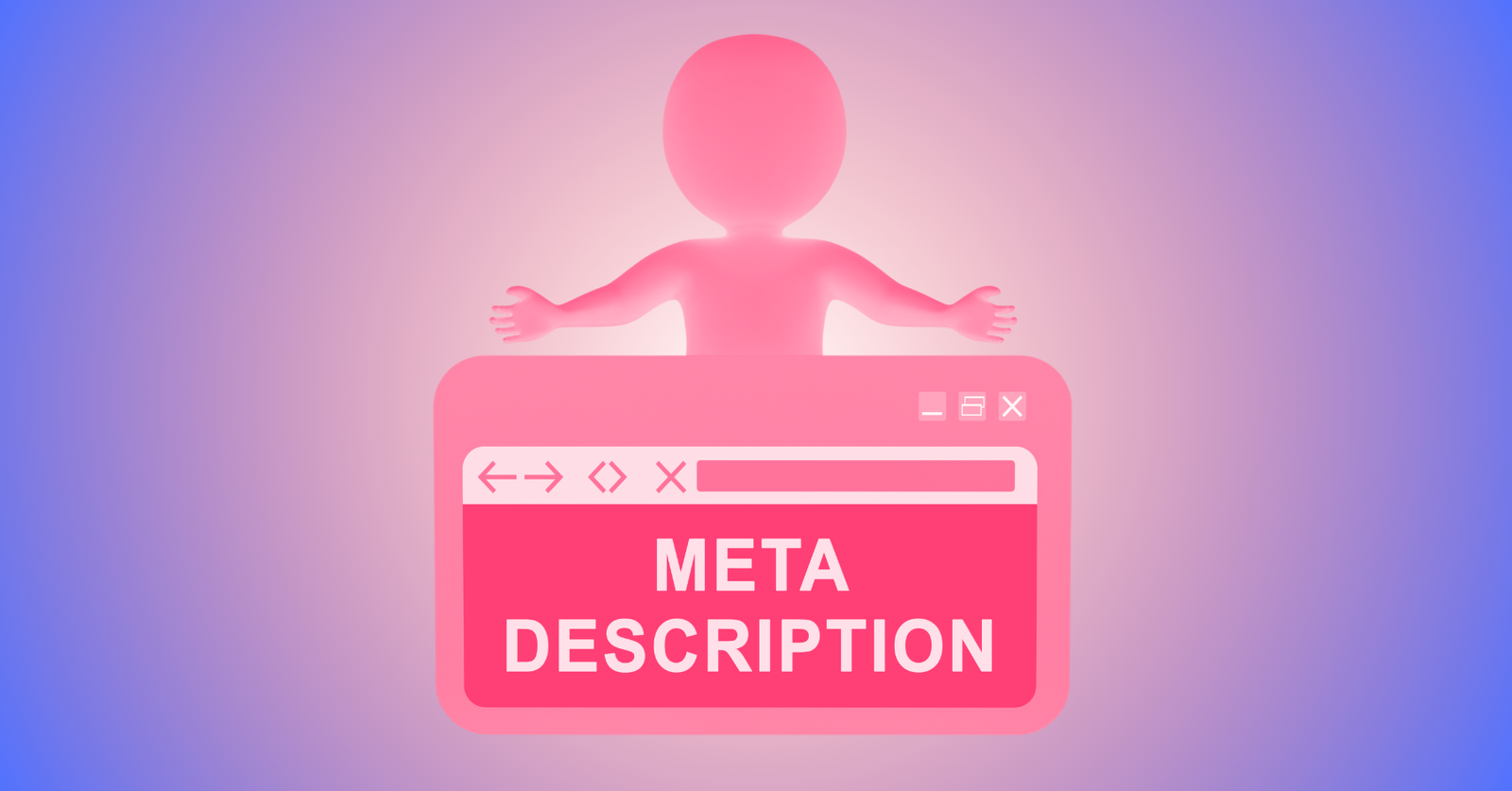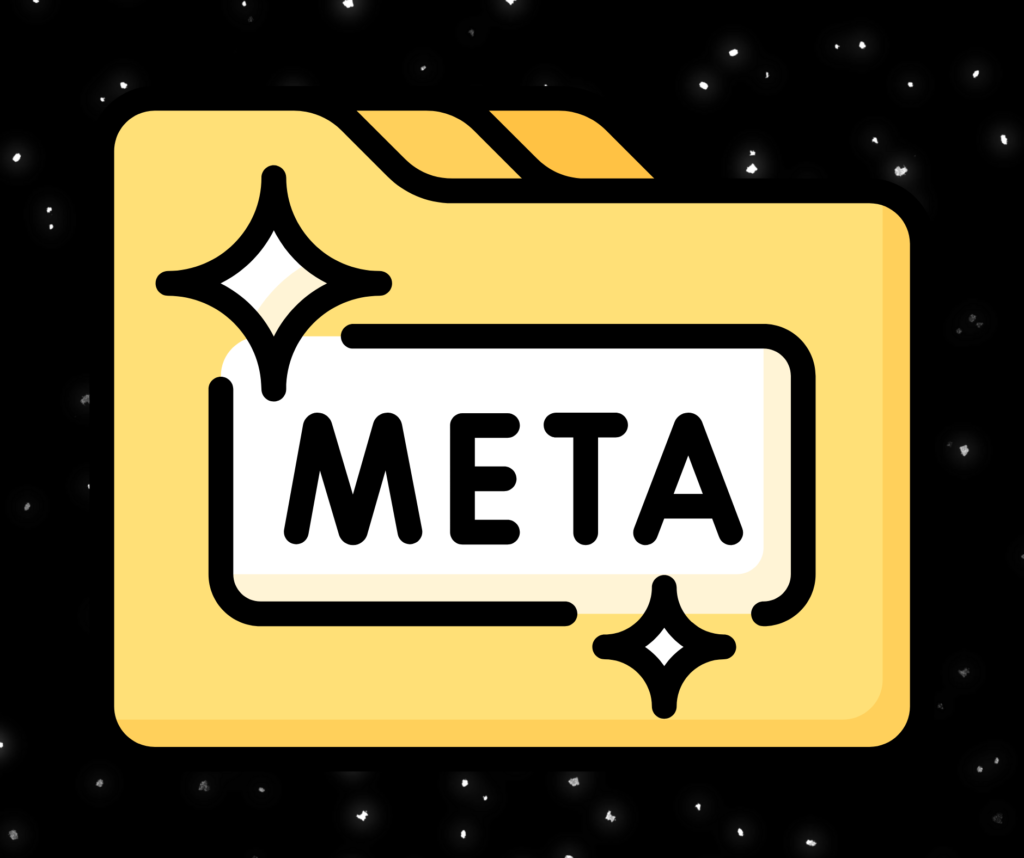
Table of Contents
ToggleIntroduction
Those of you who browse online for any topic are likely familiar with this term. When you search for something on Google and it shows you related websites, have you ever noticed what surprising elements it presents? In today’s digital age, Search Engine Optimization (SEO) is a crucial aspect of any website or online content. Among the various elements of SEO, the Meta Description is one of the key components of on page SEO. It is a part of the website that appears in search results and plays a significant role in attracting visitors. It has also become an important factor in search rankings according to search engine policies, albeit indirectly. Therefore, understanding this topic in detail is essential for SEO and ranking both your site and your clients’ sites. This is the meta description best practices.
What is a Meta Description?

A Meta Description is a short summary or snippet describing a webpage’s content. It typically ranges from 150 to 160 characters and appears below the Search Engine Results Page (SERP) title. For example, when someone searches on Google, the small description that appears under each result is the meta description.
Example:
Title: Best Online Marketing Strategies
Meta Description: In this blog, you’ll learn about the best online marketing strategies for 2025, designed to help your business grow rapidly.
Why is the Meta Description Important?
When you stroll through a marketplace and look around, what do you see on shop signs? Along with the shop’s name, there is often a tagline that gives you a summary of what products or services the shop offers, right? For example, no matter the shop’s name, a tagline like “Bringing a new dimension to women’s fashion” makes it clear that the shop specializes in women’s fashion products. Similarly, when you search online, the meta description guides your mindset in the same way.
Increases Visibility on Search Engines:
When someone searches for information using keywords in a search engine, both the title and the meta description catch their attention. An engaging and informative meta description encourages users to click, increasing the website’s visitor count.Ensures Relevance:
The meta description provides information related to the website’s content. It signals to both the search engine and the user whether the page will meet their needs. Just like I mentioned in the example of a physical shop’s signboard earlier.Boosts Brand Credibility:
A well-organized and professional meta description enhances the credibility of the brand. It creates a positive impression among readers, encouraging them to return to the website in the future.
The Relationship Between SEO, Click-Through Rate (CTR), and Meta Descriptions
Where does a shop’s success truly lie? It depends on factors like signage, decoration, product demand, quality, competitive pricing, and customer service, all of which satisfy the customer. When satisfied, they return, increasing the shop’s sales. Isn’t that so? Similarly, the goal of a website’s SEO is the same. Therefore, any element must influence this process; otherwise, it can’t be considered a strategy. Here’s a summary of how the meta description impacts a website’s traffic growth:
Impact on SEO:
Although Google doesn’t directly consider meta descriptions as a ranking factor, they indirectly play a role in SEO. When a page’s meta description is well-written with relevant keywords, it becomes more visible in search engines. As a result, more people click on the link, increasing the site’s organic traffic.Increase in Click-Through Rate (CTR):
Click-through rate (CTR) refers to the percentage of people who clicked on a particular link. An attractive meta description directly helps increase the CTR. If your webpage’s meta description is relevant and appealing to readers, they are more likely to click on that link.Staying Ahead of the Competition:
If similar information is available on other websites, a well-crafted meta description gives you a competitive edge. Readers will click on the information they find most appealing first. So, no matter how good your content is, if the meta description isn’t engaging, you might lose visitors. It’s quite like a shop’s front decoration attracting customers to enter.

Meta Description Best Practices
When writing meta descriptions, ensure they are concise, relevant, and compelling. Incorporate meta description best practices by including important keywords naturally without stuffing them. Maintaining proper keyword density helps improve visibility while ensuring the description flows naturally and remains engaging to readers.
2. Best Practices for Writing Meta Descriptions
A well-crafted meta description is important not only for search engines but also for attracting the attention of readers. A properly written meta description can significantly increase website traffic and improve search rankings. Below are some best practices for writing meta descriptions:
1. Be Concise and Relevant: Importance of Keeping It Between 150-160 Characters
An ideal meta description should be between 150 to 160 characters. This is because anything longer than that is cut off in search engine results pages (SERPs), and extra content is displayed as “…”. As a result, crucial information is missed by the reader, reducing the likelihood of them clicking. A concise and relevant meta description grabs the reader’s attention and gives a quick idea about the page’s content.
Example:
Incorrect: In this article, you will learn about online marketing strategies that can help improve your business and also discover various ways to grow your business…
Correct: Learn the top online marketing strategies of 2025 that will rapidly grow your business.
2. Include Main Keywords: Use Important Keywords for Search Engines and Readers
Including main keywords in your meta description is essential. Search engines like Google highlight relevant keywords, attracting the reader’s attention. However, avoid keyword stuffing (using too many keywords). Incorporate keywords naturally and contextually so they appear organic to the reader.
Example:
Main Keyword: Meta Description Best Practices
Correct: Learn Meta Description Best Practices that will improve your SEO ranking and enhance website click-through rate (CTR).
3. Add a Strong CTA (Call-to-Action): Use Persuasive Language to Attract Readers
A successful meta description often uses a Call-to-Action (CTA) to encourage readers to click. This can be phrases like “Learn,” “Discover,” “Click here,” “Find out,” etc. Such CTAs directly prompt the reader to take an action.
Example:
With CTA: Follow these simple steps and learn how to improve your Meta Description and increase traffic!
Without CTA: These steps will help improve your meta description.
4. Be Unique and Specific: Create a Different Meta Description for Each Page
Each web page has different content, so it is important to create a unique (distinct) meta description for every page. Using generic or repetitive meta descriptions reduces reader interest, and Google may not consider it important. Make each description specific and relevant to the content of that page, giving the reader a clear idea of what to expect.
Example:
Generic (Incorrect): Read the best tips for business growth in our blog.
Unique (Correct): Learn how digital marketing strategies can boost your business traffic by 50%.
5. Consider the Human Perspective: Writing for People, Not Robots
When writing a meta description, remember that it is meant for humans, not just search engine bots. Use simple, natural, and engaging language that addresses the reader’s needs, feelings, and problems. Avoid mechanical or complex words, and write as if you’re speaking directly to the reader.
Example:
For Robots (Incorrect): Meta description, keywords, SEO, CTR, ranking, clicks, traffic, optimization.
For People (Correct): Learn the right meta description strategies to easily increase your website traffic and ranking!
By following the above practices when writing your meta descriptions, your website’s SEO performance and click-through rate (CTR) will significantly improve. Remember, the meta description is that “first impression” that shapes the reader’s perception of your content. Therefore, it must be concise, relevant, and engaging.

3. Bad Practices for Writing Meta Descriptions
A bad meta description is often too generic and contains keyword stuffing, where unnecessary keywords are used. Such meta descriptions typically fail to entice readers to click and are also detrimental to SEO performance.
Example:
“This blog covers SEO, keywords, meta description, ranking, search engine optimization, CTR, traffic, and SEO strategies. Improve your SEO ranking now!”
Why it’s bad:
- Excessive keywords make it seem unnatural and unclear to the reader.
- There’s a lack of relevant information. The reader can’t understand how this blog will benefit them.
- Even with the CTA “now,” the repetition of words and lack of clarity reduces the chances of the reader clicking.
Why bad meta descriptions are ineffective:
- Keyword Stuffing: Using unnecessary keywords in a meta description can be penalized by search engines. It can negatively affect SEO performance.
- Vague CTA: If the CTA is weak or unclear, it’s hard to motivate the reader to click.
- Lack of Relevant Information: If the reader doesn’t understand how the page will help them, they’ll lose interest and won’t click.
A good meta description must be engaging for readers, relevant, concise, and provide useful information. Additionally, including a strong CTA is important, as it will create a sense of urgency and encourage the reader to click. Avoid bad meta descriptions that use keyword stuffing or unclear language.
4. Meta Description Strategies for E-commerce and Blogs

There are two different types of websites—one where traffic arrives with a buying intent (E-commerce) and another where visitors come to gain knowledge (Blogs). If you observe the intent of the traffic, you will notice that the language of your meta description automatically changes.
That’s why writing a meta description for e-commerce and blog posts requires different strategies and wording. For e-commerce, highlighting product features, functionality, and benefits is crucial. On the other hand, a blog post should focus on solving a problem or providing valuable information. Below, we discuss the meta description best practices for both types of content:
1. Meta Description Strategies for E-commerce
An e-commerce website’s meta description is typically focused on a product’s features, benefits, and reasons to purchase. It plays a crucial role in attracting customers and influencing their buying decisions.
Best Practices:
- Highlight Key Product Features: Mention essential product attributes such as price, size, color, ease of use, etc.
- Emphasize Product Benefits: Explain how the product benefits users, how it solves their problems, or improves their daily lives.
- Use a Strong CTA: Include a compelling call to action (CTA) that encourages users to make a purchase.
Example:
“Upgrade to the latest 5G smartphone with 128GB storage and a powerful camera. Buy now and enjoy free shipping!”
Why This Works:
✔ Clearly mentions the product’s key features and benefits.
✔ Includes a persuasive CTA to drive action.
2. Meta Description Strategies for Blog Posts
For blog posts, the meta description should communicate how the content provides value to readers. It should clarify how the blog post helps them solve a problem or gain useful insights.
Best Practices:
- Offer a Solution: Show how the blog post addresses the reader’s concern. For example, if your blog is about kitchen hacks, the meta description should highlight how these hacks save time and effort.
- Provide Valuable Information: Mention key insights, tips, or guidance available in the post.
- Use a Clear CTA: Encourage readers to click and explore the content.
Example:
“Discover easy and quick cooking hacks to save time and enhance flavor. Read our blog now!”
Why This Works:
✔ Clearly states the problem it solves.
✔ Provides valuable insights with a compelling CTA.
By following these meta description best practices, you can increase your website’s click-through rate (CTR) and user engagement. In e-commerce, it’s essential to highlight product features and benefits, while for blog posts, guiding readers toward solutions is key. A well-crafted meta description with a strong CTA and relevant information encourages users to click on your page and explore more.
Using the right tools to optimize meta descriptions is crucial. Yoast SEO is simple and effective for beginners, Google SERP Snippet Optimizer is ideal for snippet visualization, and Ahrefs or SEMrush are excellent for complex analysis and competitor monitoring. By using these tools, you can improve your website’s CTR and enhance search engine rankings while following meta description best practices.
5. Tools for Optimizing Meta Descriptions

You have everything set up, and you’ve started working on a good, suitable meta description. But how will you know if your description is improving in quality? That’s exactly where these tools come into play. Meta description best practices involve writing accurate descriptions and analyzing them for improvement. Below are detailed descriptions of some key tools:
1. Yoast SEO (For WordPress)
Yoast SEO is one of the most popular WordPress plugins used for content optimization. It provides various guidelines when writing meta descriptions, making your descriptions more effective.
Features of Yoast SEO:
- Real-time Preview: Yoast SEO offers a live preview, allowing you to see how your description will appear in Google search results.
- Description Length Check: It checks the length of your meta description and notifies you if it’s too long or too short.
- Focus Keyword Optimization: Indicates whether the focus keyword is correctly included in the description.
- Readability Analysis: Analyzes how easily your description and content can be read and offers suggestions for improvement.
Why Use Yoast SEO:
- It integrates directly with WordPress, making it easy for beginners.
- Helps in creating SEO-friendly descriptions effortlessly.
2. Google SERP Snippet Optimizer Tool
I don’t use this tool much myself, but since it’s a Google product, it’s reliable. Google SERP Snippet Optimizer is an online tool that helps you check how your meta description will appear on the Search Engine Results Page (SERP).
Features of Google SERP Snippet Optimizer:
- Live Preview: It shows a preview resembling Google snippets, allowing you to see if your title and meta description fit properly.
- Description Length Guidelines: Google generally displays meta descriptions within 150-160 characters. This tool guides you to keep your description within this limit.
- CTR Boosting: By visualizing the snippet, you can gauge how attractive your description is, which helps increase your Click-Through Rate (CTR).
Why Use Google SERP Snippet Optimizer:
- It’s free and easy to use.
- Quickly helps you evaluate how effective your description is.
3. Analysis Using Ahrefs or SEMrush
Ahrefs and SEMrush are two popular SEO tools that analyze not only meta descriptions but also the overall SEO performance of your website. These tools play a crucial role in optimizing meta descriptions. To get the best service, you’ll need to pay for these tools, so I recommend trying the free versions first.
Meta Description Analysis with Ahrefs:
- Site Audit Feature: This feature scans your website to identify issues with meta descriptions, such as missing, duplicate, or overly long descriptions.
- Content Gap Analysis: Analyzes competitors’ descriptions to identify which ones are most effective.
- CTR Boosting: Analyzes which pages have effective descriptions and which have low CTR, offering suggestions for improvement.
Meta Description Analysis with SEMrush:
- On-Page SEO Checker: SEMrush examines your website’s pages and provides specific suggestions for improving meta descriptions.
- Position Tracking: Tracks how changes in your descriptions affect rankings or traffic.
- Site Audit Reports: These reports show which pages are missing descriptions, have duplicates, or need optimization.
Why Use Ahrefs or SEMrush:
- Helps understand the overall SEO performance of your site through in-depth analysis.
- Allows you to create better descriptions by comparing with competitors.
- Easily identifies the strengths and weaknesses of your website.
Using the right tools to optimize meta descriptions is crucial. Yoast SEO is simple and effective for beginners, Google SERP Snippet Optimizer is ideal for snippet visualization, and Ahrefs or SEMrush are excellent for complex analysis and competitor monitoring. By using these tools, you can improve your website’s CTR and enhance search engine rankings while following meta description best practices.
6. Common Meta Description Mistakes and How to Avoid Them

At the beginning, I mentioned that a meta description is like your website’s signboard in the online world. Its language and presentation serve as the illuminated signboard of your website. A well-crafted meta description not only helps with SEO but also improves the click-through rate (CTR) and attracts users to your website. However, many people make mistakes while writing meta descriptions, which can negatively impact website performance. Below are some common mistakes and strategies to avoid them:
1. Using Duplicate Meta Descriptions
Mistake:
Many websites repeatedly use the same meta description, especially in e-commerce or large blog sites.
Problems:
Search engines may ignore identical meta descriptions or generate their own based on page content.
Users may get confused seeing identical meta descriptions across multiple links, which reduces click-through rates.
How to Avoid:
✅ Write a unique and specific meta description for each page.
✅ Highlight the distinct features and benefits of the product or content.
✅ If multiple pages are similar, introduce variations to differentiate them.
Example of Duplicate Meta Descriptions:
❌ Wrong:
Product Page 1: “Explore the best shoe collection at unbeatable prices. Order now!”
Product Page 2: “Explore the best shoe collection at unbeatable prices. Order now!”
✅ Correct Alternative:
Product Page 1: “Discover our latest comfortable shoe collection, perfect for daily wear. Order today!”
Product Page 2: “Lightweight and stylish shoes for walking. Buy now and enjoy free shipping!”
2. Using Irrelevant or Clickbait Meta Descriptions
Mistake:
Some websites use misleading or exaggerated claims in meta descriptions to attract more clicks.
Problems:
Users leave immediately when they don’t find relevant content (increases bounce rate).
Google can identify misleading information and automatically replace the meta description.
How to Avoid:
✅ Provide accurate and relevant information that truly reflects the page’s content.
✅ Gain users’ trust with authenticity instead of tricking them.
✅ Use engaging but truthful language.
Example of Clickbait Meta Descriptions:
❌ Wrong: “Lose weight overnight! Discover this unbelievable trick!”
✅ Correct: “Learn scientifically proven weight loss tips. Read our expert guide today!”
3. Leaving the Meta Description Blank
Mistake:
Many websites skip writing a meta description, assuming Google will generate a good one automatically.
Problems:
Search engines might pull random text from the page, which may not be compelling.
Users may receive an unclear or unappealing message about the page’s content.
Lower CTR and reduced traffic potential.
How to Avoid:
✅ Write a custom meta description for each page.
✅ Keep it concise (150-160 characters) while summarizing the key content.
✅ Include a clear Call-to-Action (CTA) to encourage clicks.
Example of Blank Meta Description Issue:
Without a meta description, Google might generate: “Our website offers various types of shoes. Browse our collection.”
✅ Correct Alternative (Custom Meta Description): “Discover stylish and comfortable shoes, perfect for everyday use. Order today!”
Avoiding these common meta description mistakes can significantly improve your website’s click-through rate (CTR) and SEO performance.
✅ Write unique meta descriptions for each page.
✅ Avoid clickbait and provide truthful, engaging information.
✅ Never leave the meta description blank.
✅ Include a strong CTA to attract users.
By following meta description best practices, you can increase website traffic, attract the right audience, and improve search engine ranking. 🚀
7. Meta Description Update and Performance Monitoring

A good meta description is not just something you write and forget; it needs regular monitoring and updates to ensure effectiveness. Search engine algorithms evolve, user preferences change, and competition grows. Analyzing performance and improving underperforming meta descriptions is crucial. Here’s a detailed guide on how to update and monitor meta descriptions effectively:
1. Tracking CTR with Google Search Console
Google Search Console (GSC) helps analyze how your website performs in search results. It provides valuable insights into your meta descriptions’ effectiveness.
Why is CTR (Click-Through Rate) Important?
CTR Formula:
CTR = (Total Clicks / Total Impressions) × 100
If a page appears frequently in search results (high impressions) but gets few clicks, it means the meta description isn’t engaging enough.
Steps to Analyze CTR in Google Search Console:
✅ Step 1: Log in to Google Search Console.
✅ Step 2: Go to the “Performance” section and select “Search results.”
✅ Step 3: Enable “CTR” and “Impressions” metrics.
✅ Step 4: Identify pages with low CTR from the list.
✅ Step 5: Optimize and update meta descriptions for underperforming pages.
2. Updating Underperforming Meta Descriptions
weak or irrelevant meta description is a key reason for low CTR. Updating meta descriptions for pages with low performance can improve engagement.
Why Update Meta Descriptions?
📌 Content details may change over time.
📌 Competitors might have more attractive descriptions.
📌 Search trends and user behavior evolve, requiring new keyword optimization.
How to Update Meta Descriptions?
✅ Use Google Search Console to analyze low CTR pages.
✅ Conduct new keyword research and integrate them into the description.
✅ Keep it concise (150-160 characters) but engaging.
✅ Check competitors’ descriptions for inspiration—don’t copy, but improve upon them.
✅ Monitor performance after updating using GSC or other SEO tools.
Example:
❌ Old, ineffective meta description:
“Find great cooking tips on our blog. Read now!”
✅ Optimized and engaging meta description:
“Learn how to cook delicious meals in just 30 minutes! Click to read our quick & easy recipes!”
3. A/B Testing: Identifying the Best Performing Meta Descriptions
A/B testing (or Split Testing) is a method where two different meta descriptions are tested to see which performs better. It helps analyze user engagement and search engine response.
Steps for A/B Testing:
Step 1: Select a page with low CTR.
Step 2: Create two different meta descriptions (one existing, one new).
Step 3: Use one meta description for the first 15-20 days and monitor results.
Step 4: Use the second meta description for the next 15-20 days.
Step 5: Determine which version gets more clicks and finalize it.
Benefits of A/B Testing:
Improves performance without changing content.
Helps identify the best CTA or writing style.
Creates more user-friendly and SEO-optimized meta descriptions.
Example:
Option A: “Learn how to write SEO-friendly blogs and rank on Google! Click to read!”
Option B: “Want to improve your SEO? Read expert tips in our latest blog post!”
If Option A gets more clicks, use it as the final meta description.
A well-crafted meta description plays a crucial role in SEO, but simply writing one isn’t enough. Regular performance analysis and optimization are necessary.
Track CTR using Google Search Console.
Update underperforming meta descriptions.
Use A/B testing to find the best-performing version.
Following meta description best practices will boost your CTR and search engine ranking, improving overall website performance.




